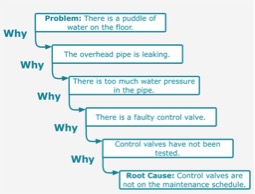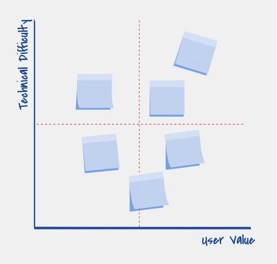Design Thinking Applied To Procurement
Don’t reinvent the wheel, apply design thinking tools to help you plan your next procurement.

Agile processes and design thinking are not fads, they are here to stay. During a three day design sprint that I participated in recently. I was bombarded with many different models designed to stimulate creativity. The result was a continual stripping down of our ideas until they were polished and on target.
Using these tools to break down our assumptions and continually test and probe ourselves for new answers was both exhausting and inspiring. Tools to aid design thinking don’t have to be high tech, new or complex to be effective. They are simple and freely available, so why aren’t we utlising them more in procurement?
Design thinking in action
Here are some of the design thinking exercises that I have used recently in my work:
- Lightning Demos: before a workshop set the attendees homework to discover relevant tools or examples of either how your problem has been dealt with elsewhere, and/or things you’ve interacted with in your daily life that you find easy to use e.g. pay wave credit card for ease of transacting, a website you’ve used, etc.
- ‘How Might We…’: takes challenges and poses them as questions.
- User Journey Maps: These help to build empathy and understanding. Start with how your user first encounters your business / product and map out their experience end to end.
- Crazy Eights: You fold your A4 piece of paper into eight sections and set the timer for eight minutes. Try and think of any solution possible, no matter how out there.
- Game theory: Using cards to stimulate combinations of thinking differently e.g. event cards, theme cards, product idea cards. Draw one each from the pile and see what ideas it generates.
- The Five Whys: the idea is to keep interrogating the cause of the problem to ensure any solution has dug to the actual root cause. In the example below often the response would end at fixing the leak.

- Personas: Another empathy building tool. Build up a detailed persona of the core or target user and use them when designing ideas.
- SCAMPER: The acronym represents seven techniques for idea generation: Substitute, Combine, Adapt, Modify, Put to another use, Eliminate and Reverse
- Dot voting: With an overwhelming amount of post it notes and ideas, each person gets two dot stickers to place on the post it note that they feel is the most important and contributes to addressing the problem statement.
- Decision matrix: Because everyone loves a four box diagram in procurement. This Is a great way to clear on priorities, especially if there are a lot of dot stickers!

Want to find out more? Google has made their design sprint kit free, its open source and available for anyone to use. You can find further information about each design thinking tool cited above by visiting their website.
How can you apply these to your procurement project?
Many internal customers come with pre-formed solutions and ideas of how to solve the problem or opportunity they wish to approach the market about. The design thinking exercises are quick ways to ensure that the right solution is being reached for. If the customer is not willing to participate, you can do these by yourself.Test for new ways to solve the issue and test that the problem or opportunity has been correctly identified in the first place.
Ditch the 400 page strategy
The Lean Canvas is where we can start to bring all the creative thinking together on one page. It should be clear, concise and make a convincing case for change. There are many free examples online. The lean canvas can be used to replace the traditional procurement plan document for low risk procurements. It can also cut down a category management paper to it’s essence, making the perfect executive summary for others to digest at a glance.
This sounds bonkers
Are people really doing this? Yes! My current workplace is central government agency and we are using the lean canvas approach in the place of traditional procurement plans.The co-design process can replace tenders effectively. The theory of change model is the perfect framework to accelerate an idea and unlock its true impact.
Get inspired and start thinking outside of the procurement box!
This article is solely the work of the author. Any views expressed in it are those of the author and do not necessarily represent or reflect official policy of the New Zealand government or of any government agency.